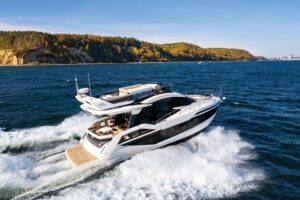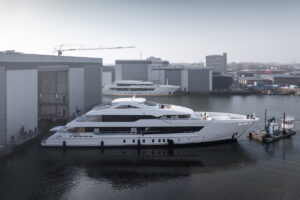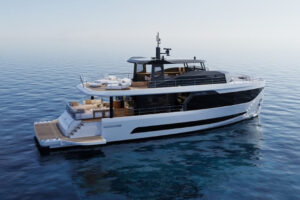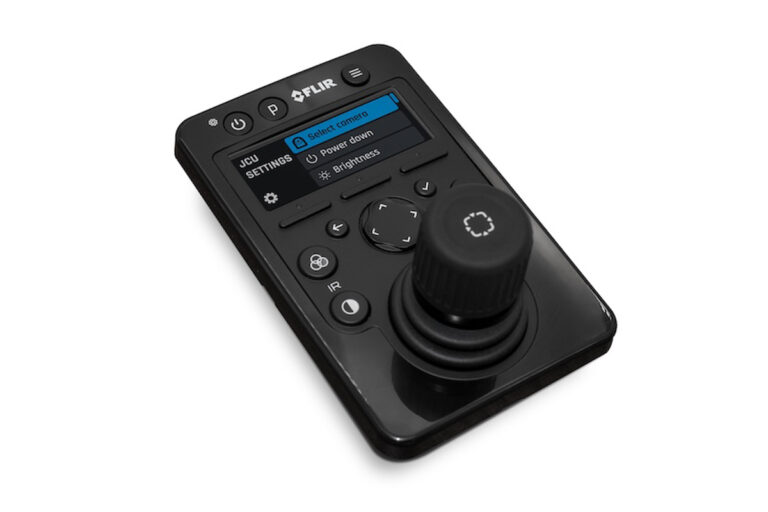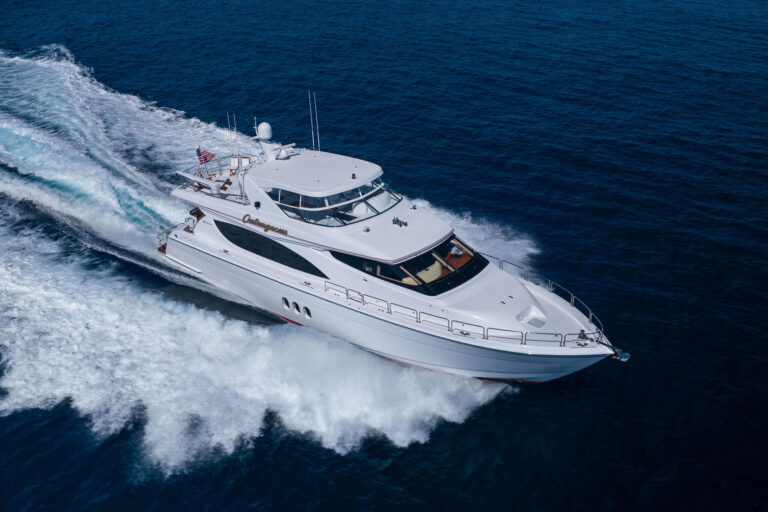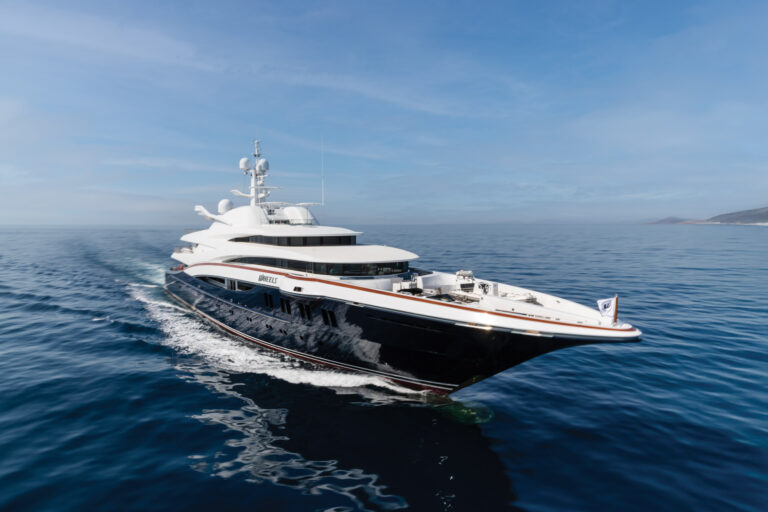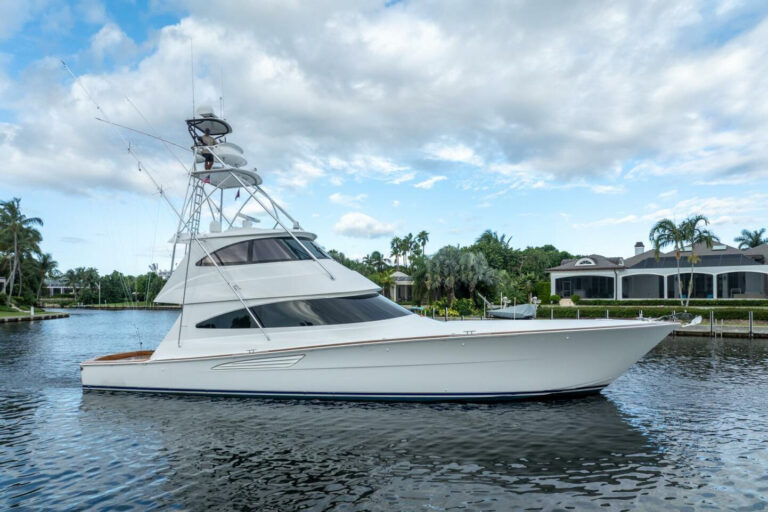Italian yachts have satiated a growing number of American yachtsmen in recent years, appealing to those who seem bored with products made in the USA. The rich American waters have inspired more than one Italian builder, but Cantieri de Sarnico claimed a beachhead last year by targeting experienced express yacht enthusiasts interested in moving up. The company, established in 1992 on the shores of Lake d’Iseo in Sarnico, Italy, builds about 40 boats a year, and the new Sarnico 55 is the best example of the yard’s ability.
As Italian boats go, the 55 is a fairly conservative design. Her exterior lines are an attractive blend of smooth, subtly curved surfaces, a pleasant departure from the flagrantly curvaceous forms becoming the norm. Her interior is far less busy than the automotive-like interiors becoming popular these days, with a finish that blends dark lacquered surfaces, light wood and leather.
The 55’s teak-sole cockpit has wide, bench-style helm seating and a tiered dash with analog instruments, electronic controls and MAN diagnostic panels. While the design includes thoughtful features, such as stowage trays and a glove box, the electronics space is somewhat limited by American standards. There is room for radar, a GPS/plotter and a sounder. A curved seating area abaft the helm has a high-low table with foldout leaves. Stowage beneath the seating is ideal for safety gear. An adjacent console has a sink, an ice maker and a top-loading refrigerator. A top-loader is a great solution, as it keeps refrigerated items from wandering the decks while under way. A sunpad is aft.
Stairs lead to the swim platform, where a hidden swim ladder deploys with the push of a button. The same is true for the passerelle, which is hidden in a transom compartment. Comfortable-width side decks lead forward to a sunpad and exterior access to a chain locker with freshwater washdown and fender stowage.
The hull and superstructure are built in female tooling with handlaid, stitched multidirectional fiberglass reinforcement. The bottom is a solid laminate supported by an egg crate-style system of fiberglass-encapsulated wood stringers, plywood bulkheads and web frames. Coring stiffens the hull sides, decks and superstructure. Interior nonstructural bulkheads and cabinetry are built in a conventional manner with solid stock and veneer over plywood. Removable access panels in the cabin sole have positive cam-style latches. This thoughtful feature makes sense in a high-speed application, where curbing interior noise and vibration can be difficult.
Access to the machinery space is via a hatch in the cockpit area. Descending a stainless-steel ladder leaves you on centerline, where most service items are accessible. Moving outboard of the engines is possible, but would be considered challenging by the average American boater. A portion of the cockpit sole can be removed for better access.
Fuel is carried forward of the engines in stainless-steel tanks that buffer sound between the machinery and forward accommodations. A 14kW generator is in the engine space, and batteries are in a ventilated area beneath a berth in the after stateroom. I would prefer the batteries be in the engineroom, as well, to keep the crew out of harm’s way.
The 55’s mechanical installations appear reasonably well thought out and executed. As with most boats built overseas, owners must learn to accept the unfamiliar. On the positive side are the fuel level sight gauge in the engineroom and the cleverly designed remote fuel shutdown system adjacent to the helm. This standard is worthy of import. On the other hand, steel engine foundations and galvanized clamps on the exhaust and raw-water systems are more than adequate, but somewhat lackluster.
Sarnico, aware of the American fascination with machinery, is fine-tuning the product for the market. Machinery spaces aboard 55s imported to the United States are bathed with white gelcoat, and mechanical components are generally available in the United States or stocked by Sarnico’s U.S. base.
The 55’s pair of 1,050 hp MANs is fitted with ZF gears and conventional shafting. V-drives or propeller pockets are unnecessary because the engine space is a bit farther forward than is typical and because her hull design is somewhat unique for a boat of her type. While she has relatively deep forward sections, her deadrise decreases aft to about 8 degrees at the transom. I hesitate to employ an oft-misapplied marketing term, but a “deep-V” form would have more than 20 degrees from amidships aft. While increased deadrise aft helps soften the ride, it does so at the cost of efficiency. Eight degrees is very efficient and, assuming you keep the 55’s stern engaged with the water, a deeper “V” will not be missed.
Conditions during our sea trial off Ft. Lauderdale were typical, a short 2- to 4-foot chop, and the 55’s hull form proved quite efficient. She is not ultra-light, and her horsepower is modest compared with some, but she managed a top speed of more than 40 knots at 2350 rpm. This is a few more turns than MAN recommends, but she should be perfect with a full load. Her 38-knot cruise at 2100 rpm was impressive.
She responded quickly to helm input and laid into turns with gusto. A bow thruster makes handling dockside a snap. She also is offered with a pair of 820 hp MANs, which Sarnico’s numbers indicate will provide a 37-knot top speed and a 32-knot cruise. I would opt for the 1,050 hp MANs. Sacrificing even a few knots is off-message.
As is most often the case with Italian boats, the 55’s interior sets her apart from most domestic competitors. While her interior design is relatively simple, it is unique in execution. Joinerwork fit and finish is well above average.
Her layout is also unique. A pocketed sliding door leads below from the cockpit through a curved passageway to the open main cabin. The galley is tucked discreetly to port, where the sink offers the only hint of its existence. A cooktop and refrigerator/freezer are hidden in the cabinetwork, which suggests typical European service and the rarity of dining aboard.
A large, curved settee to starboard has an adjustable table. There are no accommodations for a television, but a flat-screen unit could be added for media-minded Americans.
The queen-berth master stateroom and head are forward. A guest stateroom amidships, with a fixed lower berth and a Pullman, would make a great office for those who must work aboard. A head with shower is accessible from the guest stateroom, or from the main cabin.
One of the more interesting aspects of the 55’s layout is her third stateroom, which is abaft the machinery space and accessible from the cockpit. It is not the “crew’s cave” typical of so many European designs. It is a stateroom with two berths and a private head with separate shower, finished and outfitted to the same standard as the main cabin.
Cantieri de Sarnico’s boats are an interesting diversion from the mainstream. The 55 is imported to the United States and outfitted with everything from air conditioning to tableware. With 1,050 hp MANs, she is priced at $1,091,000. Add electronics and you’ll be cruising in style.
Contact: Sarnico USA, (954) 523-3600; fax (954) 523-3090.

